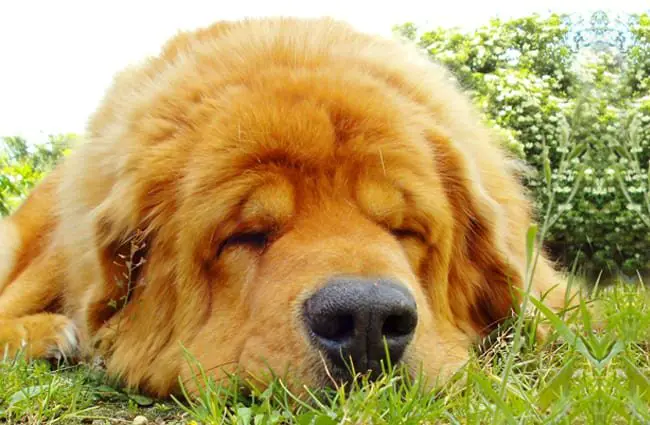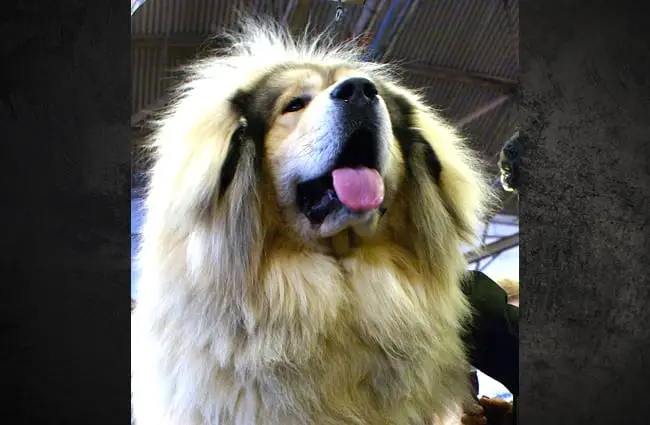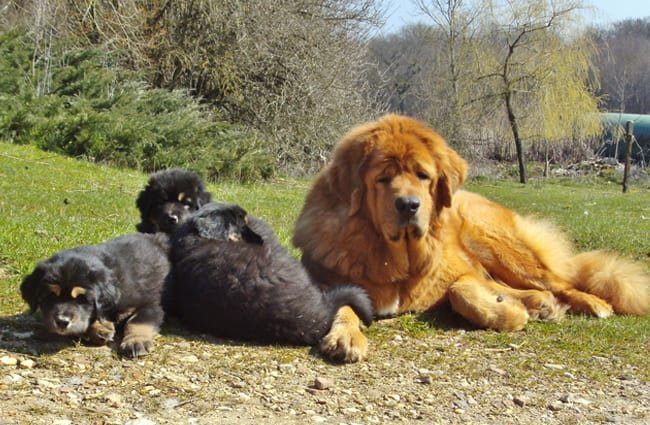A Legacy of the Himalayas: Understanding the Tibetan Mastiff
The Tibetan Mastiff is a breed steeped in ancient history and formidable presence. Originating in the rugged landscapes of the Himalayas, these dogs were bred not as companions but as guardians of livestock and property. Their very existence speaks to a life shaped by necessity and the harsh demands of a challenging environment. Understanding this background is crucial to appreciating and responsibly owning a modern Tibetan Mastiff.

History and Origins
For centuries the Tibetan Mastiff served as a sentinel for nomadic tribes and monasteries high in the Himalayas. They were valued for their unwavering loyalty, immense strength, and ability to withstand extreme weather conditions. Their role was critical in protecting livestock from predators such as wolves, leopards, and even bears. These dogs were integral to the survival of entire communities. Trade routes brought them to the West in the 19th century, but it was not until the 20th and 21st centuries that they gained wider recognition as a distinct breed. Initial introductions were sometimes misclassified, with the Mastiff grouped with other large breeds because of its imposing size and similar coloring, obscuring its unique lineage.
Physical Characteristics
Tibetan Mastiffs are undeniably large. Males typically stand between 26 and 30 inches tall at the shoulder and weigh between 100 and 160 pounds. Females are slightly smaller, ranging from 23 to 26 inches and 70 to 110 pounds. Their double coat is dense and luxurious, providing protection from the elements. Colors range from black, brown, blue‑gray, and gold, often with tan markings. The coat requires regular grooming, especially during shedding seasons. A unique characteristic is the mane around the neck and shoulders, giving them a lion‑like appearance. This mane, combined with their powerful build, conveys both majesty and strength.

Temperament and Behavior
Tibetan Mastiffs are known for their independent and dignified temperament. They are not typically overly affectionate or demonstrative, but they form strong bonds with their families. Their independent nature means they require early, consistent socialization and training. They can be wary of strangers, a trait honed over centuries of guarding duties. This wariness does not necessarily equate to aggression, but a responsible owner must ensure their dog is well‑socialized to prevent unwanted behaviors. They are intelligent but can be stubborn, requiring patience and positive reinforcement during training. Due to their protective instincts, they can be possessive of their territory and family, requiring careful management.
Caring for a Tibetan Mastiff
Owning a Tibetan Mastiff is a significant commitment. Their size necessitates ample space, both indoors and outdoors. A securely fenced yard is essential. They require a moderate amount of exercise, but strenuous activity is not necessary. Daily walks and play sessions keep them physically and mentally stimulated. Diet is critical; a high‑quality food formulated for large breeds supports their growth and health. Because of their thick coat, regular grooming is vital to prevent matting and skin issues. Brush several times a week and increase grooming during shedding seasons.

Health Considerations
Like all breeds, Tibetan Mastiffs are prone to certain health issues. Hip and elbow dysplasia are common concerns, so responsible breeders should screen their dogs for these conditions. Gastric dilatation‑volvulus (bloat), a life‑threatening condition, is also a risk, especially in large, deep‑chested breeds. Awareness of the symptoms and prompt veterinary care are crucial. Progressive retinal atrophy (PRA) and hypothyroidism are other potential health concerns. Regular veterinary check‑ups and a proactive approach to health management help ensure a long, healthy life.
The Tibetan Mastiff Puppy: Early Socialization is Key
Early socialization is paramount for Tibetan Mastiff puppies. Expose them to a wide variety of people, places, sounds, and experiences from a young age. Puppy classes are an excellent way to provide socialization and begin training. Start obedience training early and focus on positive reinforcement methods. Consistency and patience are key. Because of their independent nature, they may be slower to learn than some other breeds, but they can achieve excellent results with the right approach.

Are Tibetan Mastiffs Right for You?
Tibetan Mastiffs are not the right breed for everyone. They require an experienced owner who understands their unique needs and temperament. They are not a good choice for first‑time dog owners or those who cannot provide consistent training and socialization. They need a home with ample space and a securely fenced yard. They also do not enjoy being left alone for long periods. If you are willing to commit the time, effort, and resources to provide a Tibetan Mastiff with the care it needs, you will be rewarded with a loyal, protective, and magnificent companion.

Beyond the Guard Dog: A Gentle Giant
While historically bred as guardians, Tibetan Mastiffs possess a surprising gentleness toward their families. They are protective of children, but supervision is always necessary due to their size. They can be aloof with strangers, but are not typically aggressive without provocation. Their calm demeanor and imposing presence can be incredibly comforting. Understanding this duality—protective instinct combined with a gentle nature—is key to building a strong, harmonious relationship with a Tibetan Mastiff.

The Tibetan Mastiff is a breed that carries with it a legacy of resilience, loyalty, and unwavering strength. These majestic dogs are a testament to the enduring bond between humans and canines, and they continue to captivate and inspire those who have the privilege of knowing them.






![Red Angus Closeup of a beautiful Red Angus cowPhoto by: U.S. Department of Agriculture [pubic domain]https://creativecommons.org/licenses/by/2.0/](https://animals.net/wp-content/uploads/2020/03/Red-Angus-4-100x75.jpg)

